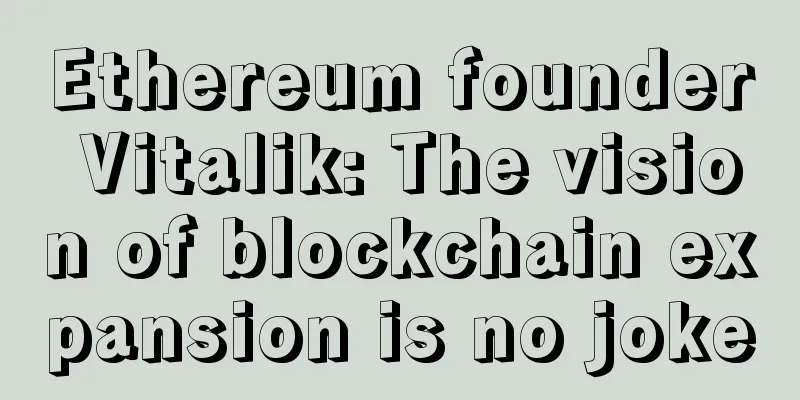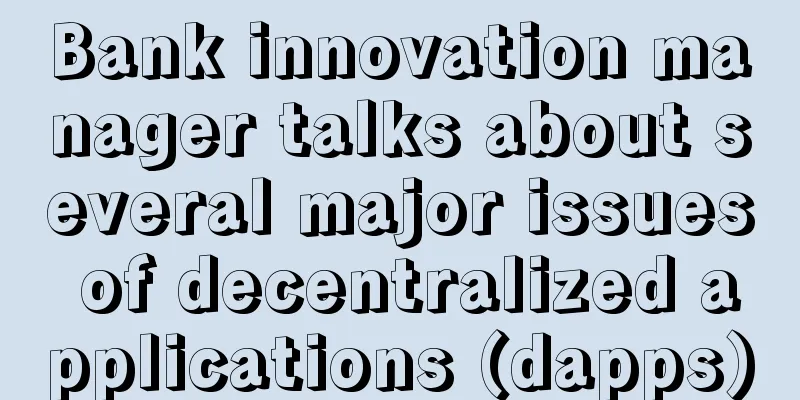Ethereum founder Vitalik: The vision of blockchain expansion is no joke

The joke came from Ethereum founder Vitalik Buterin during his keynote at the Devcon2 developer conference in Shanghai. Despite the complex technical changes facing the Ethereum project in the future (and its recent controversial hard fork), Buterin conveyed a confidence and personality on stage that made him stand out among the day’s speakers. The theme of his speech was titled “The Mauve Revolution.” It is not surprising that blockchain network problems frequently occur. As more and more banks and companies seek to use blockchain systems, the inefficiency of this nascent technology is exposed to the world, and it urgently needs to solve scalability issues. Buterin featured a slide titled “What’s so appealing about Ethereum?” where he compared it to the web “on a smartphone in 1999.” First, Buterin expressed a series of problems he sees in blockchain-based decentralized application platforms today, including transaction throughput issues. However, he told the audience:
For the rest of his speech, Buterin discussed how Ethereum could address scalability issues in the coming months and years. While he didn’t discuss any specific timelines or execution plans, the speech seemed to resonate with the audience. “Buterin has a very special ability to come up with theoretical solutions to very pressing situations today. He can be very critical of himself,” Kesem Frank, COO of Toronto-based blockchain company Nuco, told CoinDesk. Next, Buterin talked about Ethereum’s sharding plan, a concept that would lead to the creation of multiple blockchains, and also delayed the release of the third version of the “Mauve paper” that was announced before the meeting. ‘Virtual mining’ The major change that the Ethereum network is about to face is that its consensus algorithm will be converted from Proof of Work ( Buterin explained that this consensus algorithm will seek to virtually replicate the Bitcoin mining process without wasting electricity . Essentially, consumers need to purchase Ethereum in exchange for virtual mining machines, which then virtually replicate the Bitcoin mining verification process. “The virtual miners keep track of the state of the protocol,” Buterin explained. However, Buterin went further than that and offered some fixes for what he called a “supposed fundamental flaw.” First, he noted, if those who purchase virtual mining machines need to wait to join a validation pool, it could make the system more difficult to participate. Buterin also envisions limits on withdrawals and transactions to ensure that validating participants don’t harm the computational network.
Solving the problem of virtual miningThe most critical issue is the possibility of virtual mining operations being malicious. The key to solving this problem, he expects, is that the PoS algorithm will incentivize participants to continue to support the “winning” version of transaction history. One feature of his proposed solution is the inclusion of so-called “dark uncles” or “dunkles” in the protocol.
He foresees severe penalties for dunkles, which are blocks that have not been added to the valid blockchain, or orphaned blocks in Bitcoin, which could be 10 times greater than the reward. Buterin believes that under this PoS protocol, validators will bet on the blockchain they believe will win.
While the speech was highly theoretical, Buterin’s goal was actually quite simple. He concluded:
|
<<: The speech by the head of the Hyperledger project, “Umbrella”, became an important dividing line
Recommend
Analysis of fortune of people with red forehead
1. Health fortune analysis In physiognomy, if a p...
Always procrastinating before going out
In life, we see some people who do everything slo...
What are the palm lines for early death?
In the past, ancient emperors were all pursuing im...
Moles that can easily lead men to bad relationships
Moles that can easily lead men to bad relationshi...
A brief description of Bitcoin hash functions
Anyone interested in Bitcoin will have heard of t...
“Trust Machine” Blockchain: The Terminator of Food Safety Issues
Regardless of whether the supply is sufficient or...
Airdrop syndrome reappears, introduction and precautions of airdrops in the cryptocurrency circle, don’t expect too much
The recent airdrops of uniswap and MEME have attr...
The face of a man who doesn't eat but still wants to give money to the female anchor
Most of the time, men spend money on girls they l...
How to explain the five facial features of women who bring good fortune to their husbands
In this modern age where appearance is everything...
Has the negative impact of the large outflow of ETF funds ended? Bitcoin is expected to rise for the fifth consecutive month
According to cryptocurrency investment company Co...
Is it good for a woman to have Sichuan lines?
The lines on everyone's palm are different. S...
What does the location of moles on the back mean?
What influence do the moles on our body have, mor...
Circle Mobile Payments Receives First New York BitLicense
Following the exodus of several New York-based bi...
Men's willow leaf eyebrows
Is it good for a man to have willow-shaped eyebro...
A woman who can accomplish great things has a very high and broad forehead.
In fact, career is not just something that men ca...









